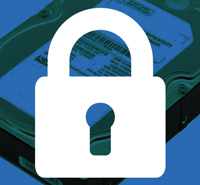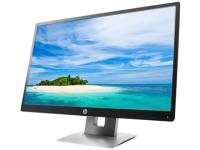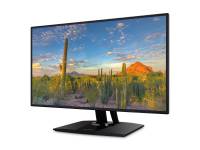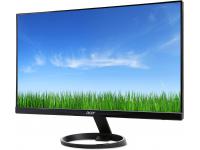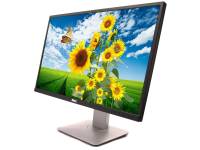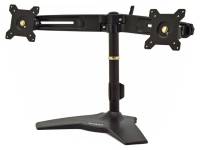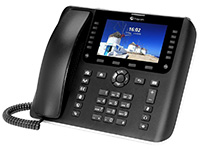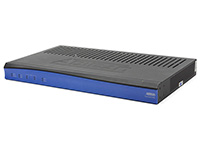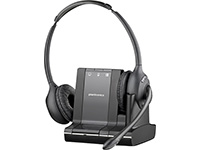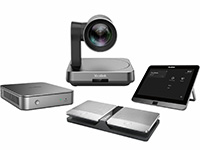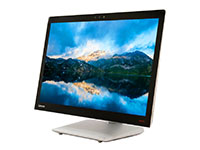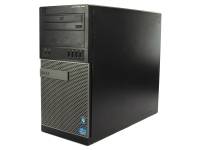Resetting your personal computer to be able to use it like before can happen at one point. Sometimes, it’s the only solution in certain situations. System resetting a refurbished computer is no different from that of a brand-new one. If it’s running on Windows or macOS, the option to reset your system is built into its settings.
The process of resetting sounds straightforward enough. But admittedly, performing a reset sounds unnerving the first time. What would happen to your files? What if something goes wrong during the reset? What would be the best practices for preventing data loss during system reset?
These are valid concerns that we aim to address in this refurbished computer system reset guide. Find relevant answers to crucial questions and learn how to maneuver the reset process, secure your files, and overcome potential issues that may arise during the process.

Photo by Tadas Sar from Unsplash
Understanding a System Reset in a Refurbished Computer
A system reset essentially returns your computer to a particular state, akin to providing it with a fresh start or a clean slate. For a refurbished computer, a reset adds another life to the device.
A factory reset on a Windows device can mean removing applications and settings while leaving personal files untouched, or it may wipe out everything—apps, settings, and personal files. For applicable Macbooks, they can be restored to factory settings through the “erase all content and settings” option.
The reset is not a linear process, even if it’s easier and more intuitive for users now. While you’d like it to be hassle-free, errors and issues may surface along the way. After all, the process involves your precious data and underscores data backup, data security, data recovery, and data protection during the system reset.
Scenarios When a System Reset Is Necessary
A system reset can be an advantageous move in certain situations. It provides a swift and simple solution for purging your computer of unwanted or excessive content. In some instances, it can serve as the only effective way to rid your computer of viruses or malware.
Here are more reasons or scenarios when it’s warranted to perform that system reset.
Scenario 1: Make the PC Run Faster
Whether you’re working or playing games, a few seconds’ delay can ruin your momentum. A reset may just be the jolt to get your computer to run faster. Decluttering your device also means freeing up space to improve the PC’s performance.
Bear in mind this fix is temporary. Your computer will naturally undergo wear and tear over time, and its storage will eventually fill up again. Nonetheless, the post-reset performance can be a deciding factor on whether to upgrade your system’s components or buy another computer.
Scenario 2: Give the Laptop Away
If you’re planning on giving away your laptop, a system reset will help present it in the best possible condition. It ensures the device is immediately usable for the new owner. This also safeguards your personal files and maintains their confidentiality through prior backup and deletion.
In performing the reset, enable “Clean Data” to clean the drive. This option is available in Windows 10 and up.
Scenario 3: Dispose of or Recycle the Computer
Perform a reset to prepare the computer for recycling or proper disposal. If you’re an organization with proprietary and sensitive files on your computers, you can’t bear the risk of anyone recovering your files through sophisticated methods.
To ensure that no crucial data becomes retrievable, consider performing data sanitization or hiring experts to carry out the task.
Scenario 4: Sell the PC
You could sell your used computer at a higher price if it’s turned over in the best condition possible. Make life easier for the buyer by performing the factory reset yourself and removing any traces of its previous life, data included.
Although it’s common practice to sell a computer without a hard drive and keep the HDD for yourself, the absent drive could impact its price and saleability.
Scenario 5: You Bought a Used Computer
Let’s say you’ve managed to purchase a used computer at a bargain price, yet the unit was sold as is. In such a case, you’ll need to perform a system reset or carry out a clean installation to eliminate personal files and any potential issues.
You may not have to do the reset if you buy a refurbished computer from a legitimate reseller. They would have cleaned the unit, repaired it, and restored it to its default state prior to being sold in the market again. This includes data, which a reputable refurbisher would have to wipe and destroy responsibly.
Steps to System Reset a Refurbished Computer
Any resetting of a computer starts with creating a backup. This is the first major step, followed by initiating the reset and dealing with the post-reset scenario.
The reset scenario here uses Windows 10, as Windows is the most globally utilized operating system. According to Microsoft’s annual report in 2022, 1.4 billion monthly active devices run Windows 10 or Windows 11.
I. Creating a Backup
Save your files prior to resetting your computer to prevent data loss. We present three options for Windows users.
Windows File History
This feature is used to up and restore specific files should their original copies be lost or deleted.
To access, type File History on the Windows search box or Control Panel > System and Security > Save backup copies of your files with File History. Its default setting is off. You need to connect a usable drive, like an external drive, for File History. Then, click Turn On.

With File History, you can:
- Choose the drive for File History under Select Drive or add a Network Location.
- Select which folders or libraries you don’t want to save copies of under Exclude Folders.
- Under its Advanced Settings, decide (a) how often you want to save copies of your files and (b) how long you want to keep those saved versions.
To check if you have enabled File History (or have a backup), go to Start > Settings > Update and Security > Backup. On the Backup page, the option Back up using File History is toggled on. Clicking More Options will show you the settings above (e.g., which folders to backup and exclude).
Windows Backup
The integral function of Windows Backup is to secure important files and credentials safely. Here’s how to do it:
- Sign up or log into your Microsoft Account.
- Access Windows Backup from the Start menu.
- Click on the following to access the drop-down menu and toggle on or off an option:
- Folders to back up files, documents, and more to OneDrive
- Apps to remember installed apps and pinned app preferences
- Settings to remember Windows settings and preferences
- Credentials to remember Wi-Fi networks and other passwords
- Return to the main Windows Backup page and click the Backup button.
Manual Backup
This provides you with complete control over what you wish to save and where. Follow these steps to initiate the process:
- Insert an external drive or any removable media.
- Go to This PC and select the drive.
- Copy files that you want to save to the drive.
Mac Backup

Like Windows’ File History, Mac’s Time Machine requires an external drive to make backups.
To set up the drive as a Time Machine backup disk on MacOS Sonoma, click the Apple menu > System Settings > General > Time Machine > Add Backup Disk. Once you’ve added the disk, set it up by clicking Set Up Disk.
To easily access Time Machine on the menu bar and choose Back Up Now, go to Apple menu > System Settings > Control Center > Time Machine and choose Show in Menu Bar.
Software Backup for Refurbished Computers
These are tools that let you automatically or manually back up files on your computer. These software solutions have varying options, features, and prices. Free software backup tools include Comodo Backup, Cobian Backup/Reflector, and MiniTool ShadowMaker.
II. Initiating the Reset
Once you’ve made sure you have copies of your important files, it’s time to reset your computer. Let’s walk through the necessary steps for the following operating systems.
Windows 10
1. Click Start > Settings > Update & Security > Recovery > Reset this PC, which lets you keep or remove personal files and reinstall Windows. If you are ready, click the Get Started button.
2. You will be presented with the following options:
Option A: Keep my files. Removes apps and settings but keeps your personal files.
If you choose to keep your files, you’ll be then asked between cloud download and local reinstall for reinstalling Windows. If you opt for local reinstall, you’ll be taken to Additional Settings, which recaps your current settings.
If you click Change Settings, you’ll be asked to restore preinstalled apps, which restores apps and settings that came with the computer, and Download Windows to reinstall Windows from the device. Click Confirm. You will be taken to another page showing the settings you’ve previously chosen. Then, click Next.
Option B: Remove everything. Removes all of your personal files, apps, and settings.
Just like the first option, you’ll be asked to choose between a local reinstall and a cloud download. Likewise, a local reinstall will show a recap of your current settings. You can choose Change Settings to toggle on or off these settings:
- Clean data removes your files. This is quicker but less secure.
- Download Windows will reinstall Windows from the device.
- Delete files from all drives will delete all files from the Windows drive.
Click Confirm. You’ll be given a recap of your previous choices. Then click Next. On Ready to reset this PC, you’ll be shown a message about the results of the reset, including but not limited to removing all the personal files and user accounts on this PC. Read it carefully. Then hit Reset.
Your computer will restart as part of the resetting. Follow the instructions and prompts on the screen.
3. If you need help in deciding, click Help me choose.
MacOS Sonoma

Go to Apple menu > System Settings > General > Transfer or Reset > Erase All Content and Settings. This option will erase all settings, media, and data for all volumes on the Macbook, including credentials like fingerprints.
The erase assistant will guide you through the process. Once you’ve taken all the action required and are ready to proceed with the action, confirm by clicking Erase All Content & Settings.
Expect the unit to restart more than once during the process. You’ll know it’s complete when the screen displays “Hello.” When you see the screen showing that the Mac is activated, click Restart.
Still have problems? Get in touch with our IT experts for personalized assistance.
III. Post-Reset Setup
If you plan to donate, sell, or recycle the computer, simply perform a final check and shut it down post-reset. For continued usage, check updates and start adding anti-virus, browser, and other applications. Transfer or restore your files, too.
Post-reset setup for refurbished computers entails extra steps, such as checking the unit for any damage, scanning it for viruses, and upgrading its hardware to boost its performance. Even if the seller has shipped the item cleaned of data and physical blemishes, you still need to inspect the unit like any new item you’ve bought.
Data Recovery after a System Reset
In the event that you lost certain files or forgot to save copies during the reset, data recovery in a refurbished computer is possible but not guaranteed. Your chances of getting those files back would depend on the settings you’ve selected during the reset.
Check out the two main recovery options after a refurbished computer reset:
Use Data Recovery Software
Data recovery tools usually work by scanning drives for lost files and retrieving them. You can choose where to save those recovered files. They can be freemium and compatible with Windows, macOS, or both. The level of the scan varies by software and the types of files it supports.
Important: Always check the reviews and feedback from users on online platforms before downloading it. No matter how good or effective the tool sounds, do your research and check if that tool is safe to use.
Restore from a Backup
If File History is enabled, use Restore files from a current backup to recover missing or corrupted files.
Go to Start > Settings > Update & Security > Backup > Backup using File History > More options and scroll toward the end of the page. Click Restore files from a current backup and double-click a folder to look for the files. To restore the desired file or folder, click the green button (Restore).
For Mac, go to Time Machine. Navigate to the point in time containing the desired file or folder, and click Restore to begin the recovery process.
Troubleshooting Common System Reset Errors in Refurbished Computers

Photo by ThisisEngineering RAEng from Unsplash
Can’t reset your computer? This section is dedicated to troubleshooting system reset errors in refurbished computers.
The biggest issue you’ll probably face while resetting your PC (Windows) is getting the error message, “There was a problem when resetting your PC. No changes were made.” This underlies different reasons and may require different solutions.
Solution No. 1
Use the Deployment Image Servicing and Management (DISM) command to repair Windows (10) image. Type Command Prompt or cmd in the search box. Run it as an administrator. Type dism /online /cleanup-image /restorehealth command and hit Enter. Once the scan is complete, reboot your system and then try to reset the PC again.
Solution No. 2
Run a System File Checker (SFC) scan to repair corrupted files. On the elevated Command Prompt window, type sfc/scannow and hit Enter. After the scan, restart and reset your PC. Consider running the DISM command first before the SFC for this reason.
Solution No. 3
Use Startup Repair to fix problems keeping Windows from loading. Go to Start > Settings > Update & Security > Recovery > Advanced Startup > click Restart Now. Choose Troubleshoot > Advanced Options > Startup Repair. Follow the instructions on the screen.
Solution No. 4
Use System Restore, which lets you undo recent changes made, like recently installed programs, but keeps documents and other personal data. Access Control Panel > type Recovery > Open System Restore > Restore system files and settings. In order to proceed to the next steps and scan for affected programs, you need to have system restore points to choose from. Create a system restore point under System Properties.
Commonly Asked Questions about System Resetting a Refurbished Computer
Have lingering questions about system reset? Check our refurbished computer system reset FAQs.
Will a system reset erase all my data and software?
Choosing the remove or erase everything option during a reset will delete all applications, files, and other settings. Opting to clean your drives makes the recovery of these files more difficult.
Deleted data could still remain in the hard drive after a factory reset until it’s overwritten. That’s why some users, especially organizations, hire experts to completely wipe data from their computers.
How can I recover my data after a system reset?
You can try restoring files after a backup and using recovery software. Just remember that not all data is retrievable. For a more in-depth look at these recovery methods, refer to the “Data Recovery after a System Reset” section provided earlier.
What precautions should I take before conducting a system reset?
Save copies and back up your files. Understand the scenario of your reset. For example, you may be more circumspect with your data and go for a more in-depth data erasure if you plan to dispose of the unit afterward.
Also, make sure you understand what happens to your files after the reset. Recoverability can be a matter of chance, so always safeguard your important files prior to any reset.
How long does a system reset of a refurbished computer take?
It can take 30 minutes to hours to reset your computer, factoring in the amount of data to be deleted, the level of cleaning and the number of drives to be cleaned, and the hardware specs. Whether refurbished or new, the computer hardware influences how long it takes for a computer to complete a reset.
Windows also includes a note about a reset taking a while before you hit the reset button.
Does a factory reset remove the operating system?
No, the reset will only remove unwanted content from your computer. You won’t need to reinstall the operating system because it is included in the resetting (just choose whether to go local or cloud install).
Final Thoughts
Congratulations! You’ve made it to the end of this refurbished computer reset walkthrough. You might be in the process of assimilating all these steps and procedures by now, but remember these key points in system resetting your refurbished computer:
- A reset helps your computer run like it’s brand-new and faster than before. It gives you an option to keep only the files you need.
- The reset is a functionality in the computer. Follow the steps outlined above, from preparing your files for backup to setting up your PC post-reset (there may be slight changes by Windows OS). If you encounter problems along the way, like an error message that stops you from resetting, there are solutions provided.
- If you need to recover personal files after the system reset, try the data recovery options.
By understanding and implementing this guide carefully, you ensure the optimal functionality and longevity of your refurbished computer. Here’s to a smoother, more satisfying tech experience!






